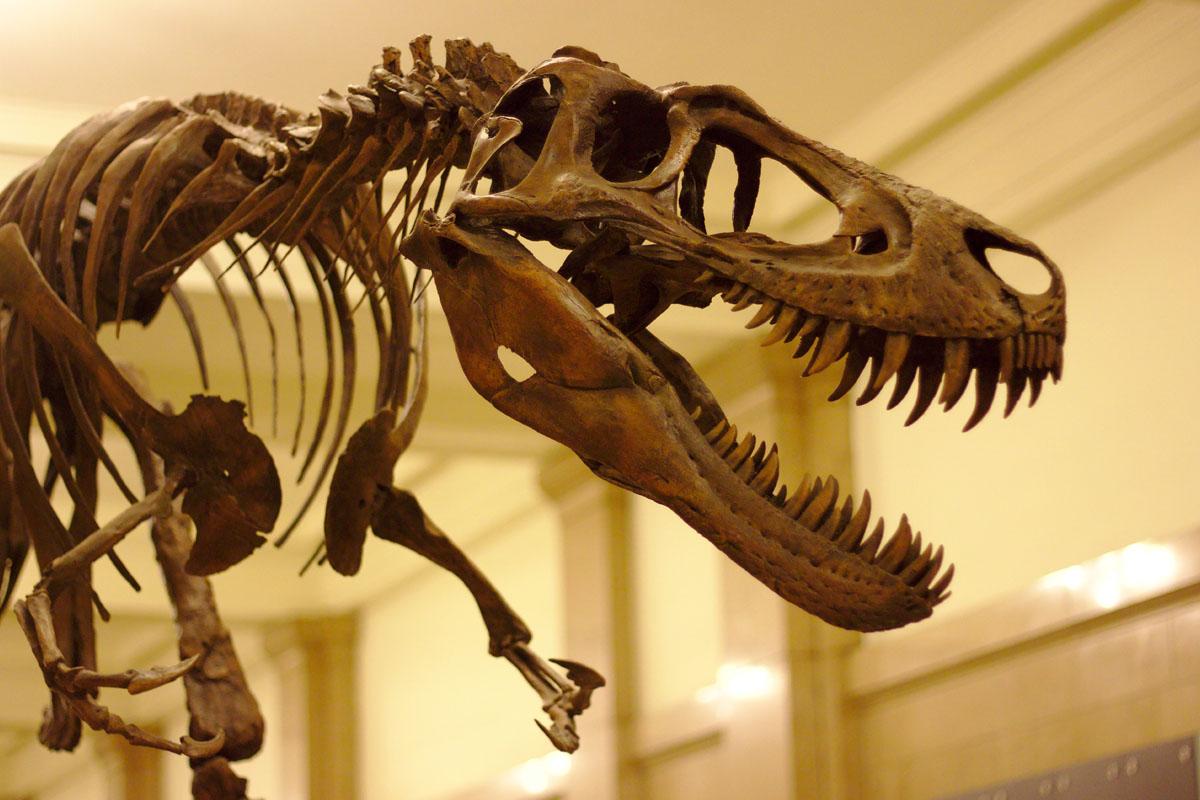Y: Don, today’s Moment of Science is about Tyrannosaurus rex. Did you know it had two holes in its skull that paleontologists call the dorsotemporal fenestrae.
D: Dorso...what? Come on, Yaël! Can’t we find something more interesting to talk about than some holes with big names in dinosaur skulls.
Y: Trust me, Don. Those holes are a major paleontological mystery. In many other animals, similar holes in the skull are an attachment point for jaw muscles. But, for T. rex and some related dinosaurs including Velociraptor, the positioning of the holes on the top of the head is all wrong for that role. Besides, the edges of the holes are smooth, not rough like they would be if they were points where muscles attached to the skull.
D: So, scientists don’t know what the function of the holes was. I’ll bet if biologists looked carefully at the skulls of living relatives of these dinosaurs, such as modern birds and reptiles, they might find some clues to what the holes are for.
Y: A group of American anatomists did exactly that, and published their results in 2019. They found that in modern crocodiles and some birds, similar holes are filled with blood vessels and fat, instead of being attachment points for muscles. Using data collected by taking thermal images of crocodiles, the researchers argue that the blood vessels in the holes help the animals regulate their body temperature and keep their brain cool. They theorize that the holes could have served a similar function for the crocodile’s ancient dinosaur relatives, such as T. rex.
D: Wow! A mystery might be solved.









